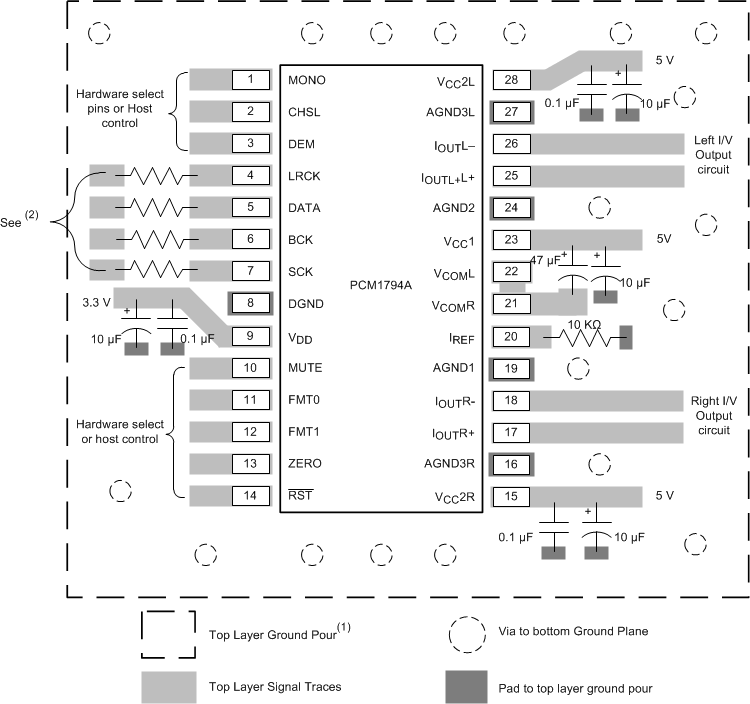SLES117B August 2004 – December 2015 PCM1794A
PRODUCTION DATA.
- 1 Features
- 2 Applications
- 3 Description
- 4 Revision History
- 5 Pin Configuration and Functions
- 6 Specifications
- 7 Detailed Description
- 8 Application and Implementation
- 9 Power Supply Recommendations
- 10Layout
- 11Device and Documentation Support
- 12Mechanical, Packaging, and Orderable Information
Package Options
Refer to the PDF data sheet for device specific package drawings
Mechanical Data (Package|Pins)
- DB|28
Thermal pad, mechanical data (Package|Pins)
Orderable Information
10 Layout
10.1 Layout Guidelines
TI recommends using the same ground between AGND and DGND to avoid any potential voltage difference between them. Ensure the return currents for digital signals avoid the AGND pin or the input signals to the I/V stage. Avoid running high frequency clock and control signals near AGND, or any of the IOUT pins where possible. The pin layout of the PCM1794A partitions into two parts: an analog section and a digital section. If the system is partitioned in such a way that digital signals are routed away from the analog sections, then no digital return currents (for example, clocks) should be generated in the analog circuitry.
Place the decoupling capacitors as close to the Vcc1, VCC2L, VCC2R, VCOML, VCOMR, and VDD pins as possible. See Figure 34 for additional guidelines.
10.2 Layout Example

27 Ω for the other resistors.